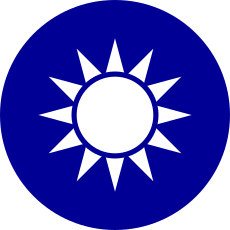Mexico–Taiwan relations
 |
|
Mexico |
Taiwan |
|---|---|
Mexico–Taiwan relations refers to the diplomatic relations between Mexico and the Republic of China (Taiwan).
History
Beginning in 1949, Mexico maintained diplomatic relations with the Kuomintang government of the Republic of China.[1] However, official relations between Mexico and the Republic of China (Taiwan) ended in 1971 when Mexico voted in favor of the United Nations General Assembly Resolution 2758 which recognized the People's Republic of China (mainland China) "as the only legitimate representative of China to the United Nations".[2][3] Since the adoption of UN Resolution 2758, Mexico has maintained official diplomatic relations with mainland China and un-official diplomatic relations with Taiwan since 1972.[3]
In order to promote trade, in 1990 Mexico opened a "Mexican Trade Services" office in Taipei (which held no diplomatic status). The office was later upgraded in 1991 to include a consular section and it was known as the "Mexican Trade Services, Documentation and Cultural Office".[3] In 1993, Taiwan opened a 'Taipei Economic and Cultural Office' in Mexico City.[4] Both representative offices are unofficially de facto embassies in each nations' capitals, respectively.
Both Mexico and Taiwan are members of the Asia-Pacific Economic Cooperation. In November 2002, Taiwanese Representative of the President, Yuan T. Lee, visited Los Cabos, Mexico to attend the APEC summit. He was the first high ranking representative to visit the country.[5]
Trade

Taiwan is the third largest investor in Mexico from Asia and Mexico's ninth biggest trading partner globally.[6] In 2015, total trade between both nations totaled $6.9 billion USD.[7] In May 2012, a memorandum to explore a free trade agreement was signed between both nations.[8]
Resident diplomatic missions
- Mexico has a liaison office in Taipei known as the "Mexican Trade Services, Documentation and Cultural Office".[9]
- Taiwan has a liaison office in Mexico City known as the "Taipei Economic and Cultural Office in Mexico" (Oficina Económica y Cultural de Taipei en México).[10]
See also
- Mexican Trade Services Documentation and Cultural Office
- Taipei Economic and Cultural Office in Mexico
References
- ↑ Mexican Ministry of Foreign Affairs: China
- ↑ United Nations Resolution 2758
- 1 2 3 Mexican Ministry of Foreign Affairs: Taiwan (in Spanish)
- ↑ Oficina Económica y Cultural de Taipei en México (in Spanish)
- ↑ República de China sostiene consultas con varios países dentro del marco del APEC (in Spanish)
- ↑ Taiwán busca ser socio de México en el TPP (in Spanish)
- ↑ Mexican Ministry of the Economy: Taiwan (in Spanish)
- ↑ Taiwán y México firman memorándum de entendimiento - cooperación para la promoción del comercio bilateral (in Spanish)
- ↑ Mexican Trade Services, Documentation and Cultural Office (in Chinese and Spanish)
- ↑ Oficina Económica y Cultural de Taipei en México (in Chinese and Spanish)

